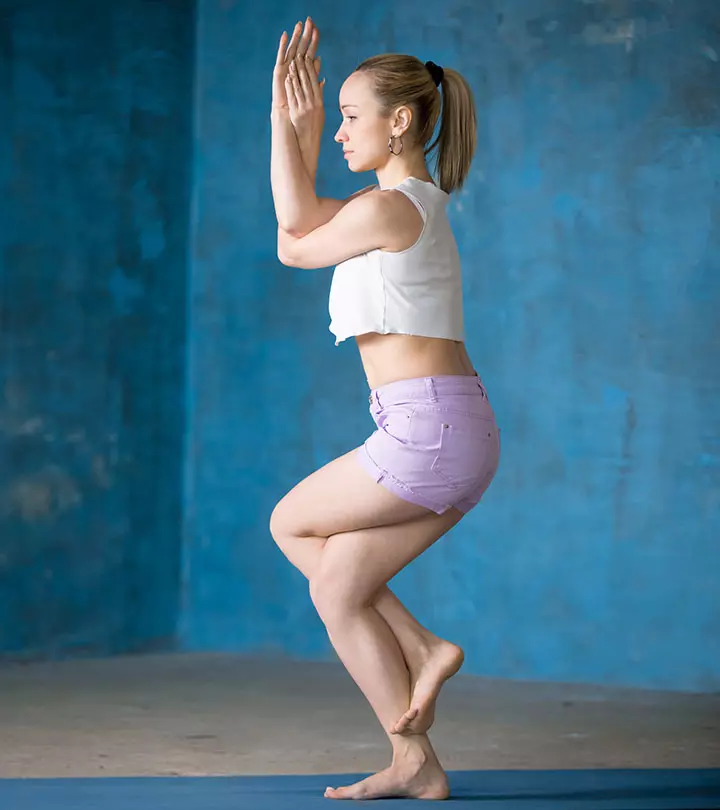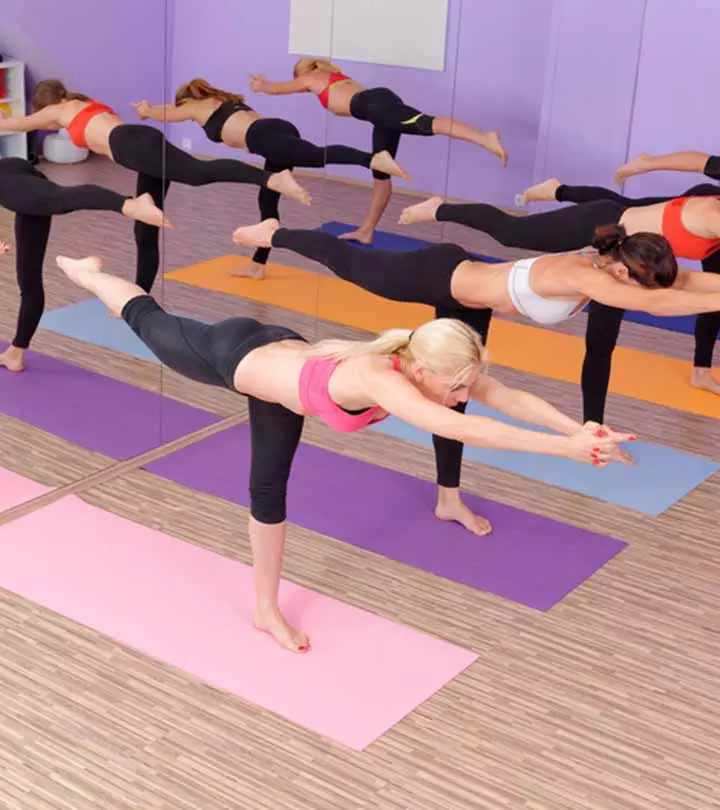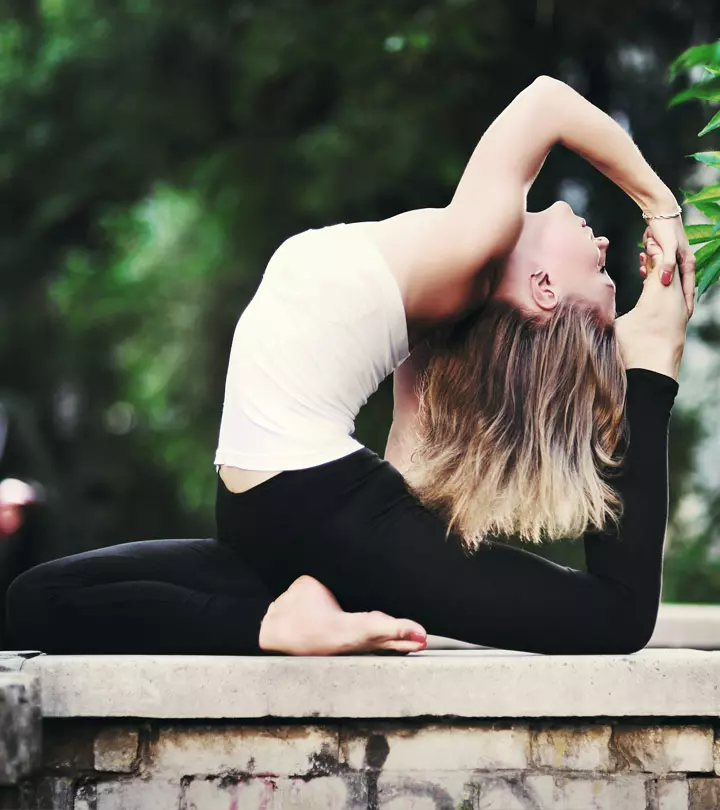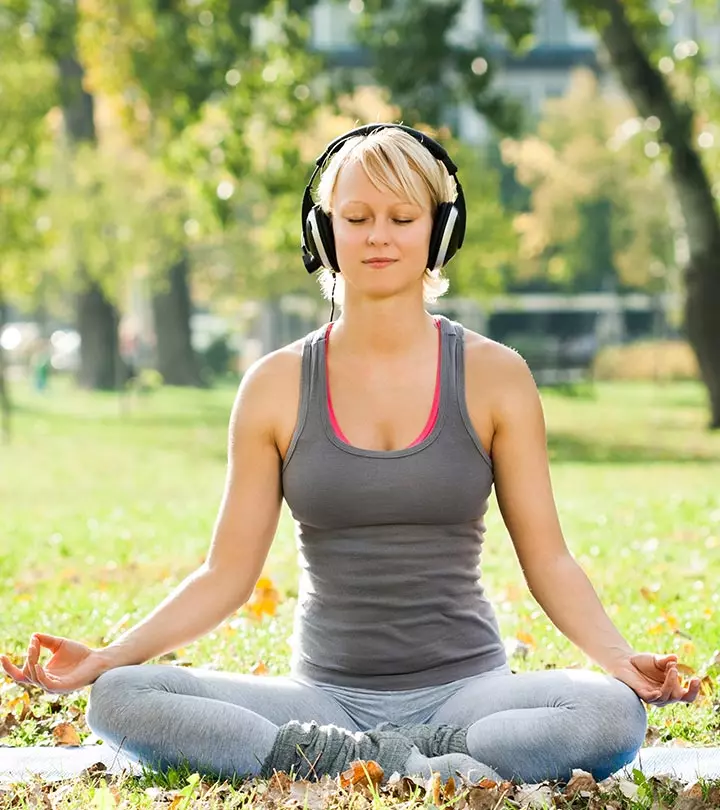How To Do The Garudasana And What Are Its Benefits
Master balance and strength with this ancient pose that boosts focus and vitality daily.

Image: iStock
Garudasana or Eagle Pose is an asana. Sanskrit: गरुडासन; Garuda – Eagle, Asana – Pose; Pronounced As – gah-roo-dah-sah-nah
Garuda is the Sanskrit term for eagle. Indian mythology suggests that Garuda was the king of all birds. This bird not only served as the vehicle of Lord Vishnu but was also a frontrunner when it came to fighting against demons. Garuda also means devour. Being an old representation of the mythical phoenix, they say that the Garuda identifies itself with the “all-consuming fire of the sun’s rays”.
Everything You Need To Know About The Garudasana
- What You Should Know Before You Do The Asana
- How To Do The Garudasana
- Precautions And Contraindications
- Beginner’s Tips
- Advanced Pose Variation
- The Benefits Of Eagle Pose
- The Science Behind The Garudasana
- Preparatory Poses
- Follow-Up Poses
What You Should Know Before You Do The Asana
This asana must be done only on an empty stomach. You need to make sure to have your meals four to six hours before your practice and give your body enough time to digest your food. Ideally, there needs to be a 10-12 hour gap between your meals and your practice, which is why it is best advised to practice this asana early in the morning. However, owing to busy schedules, a lot of people find it hard to work out in the morning. Such people may practice yoga in the evening. Your bowels also must be clean when you practice this asana.
- Level: Basic
- Style: Vinyasa
- Duration: 15-30 seconds
- Repetition: Once on each leg
- Stretches: Shoulders, Thighs, Hips, Ankles, Calves, Upper back
- Strengthens: Ankles, Calves
How To Do The Garudasana
- Stand erect. Gently bend your right knee, and wrap your left leg around your right, such that the knees are stacked over each other. Your left foot must touch your right shin.
- Raise your arms to the shoulder height and wrap your right hand around your left. Ensure that your elbows are bent at 90-degree angles and are also stacked.
- Strike a balance in the pose as you gently bring down your hips. Your knees must move towards the midline instead of leaning to one side.
- Hold the pose for a few seconds. Breathe deeply and slowly. Focus on the third eye, and let go of your negative emotions.
- Release the pose, switch the limbs, and repeat the pose.
Precautions And Contraindications
These are some points of caution you must keep in mind before you do this asana.
- It is best to avoid this asana if you have had a recent ankle, knee, or elbow injury.
- Pregnant women must seek medical consent before they practice this asana.
Beginner’s Tips
As beginners, you might find it difficult to tangle your arms around each other. To make it easier, stretch your arms out, such that they are parallel to the floor. Hold onto the ends of a strap. Now, as you hold on to the strap tightly, try and wrap your hands into position.
You might also find it hard to latch your raised foot behind the standing leg’s calf. Until you get comfortable, press the big toe of the raised leg instead of the whole foot. This will help you maintain balance.
Advanced Pose Variation
To deepen the pose, once you have assumed the posture, lean forward, and nudge your forearms into the thigh of the top leg. Hold for a few seconds. Then, come back up. Repeat the asana with the other leg.
The Benefits Of Eagle Pose
- This asana helps to stretch the thighs, hips, upper back, and shoulders.
- It helps you focus and also improves your ability to balance.
- The calf muscles get strengthened with this asana.
- It also helps to relieve pain associated with rheumatism and sciatica.
- It helps to make the back, legs, and hips more flexible.
- This asana also works as a stress buster.
The Science Behind The Garudasana
When you do this asana, it is likely that you feel constricted. But when you master it, your body feels like it is ‘riding in the wind’, just like an eagle. The term ‘riding in the wind’ refers to a flow of energy in any situation. This flow, or energy, helps you become steady, stable, and spacious in the midst of a challenging situation, without any barriers. Resisting makes you tired, and you are tempted to give up. If you give up or resist while you are in this asana, you will most likely lose your balance. But if you do this asana with an open mind and great courage, you will overcome the obstacles and have a constant flow of positive energy through your mind and body.
Preparatory Poses
- Adho Mukha Svanasana
- Gomukhasana
- Prasarita Padottanasana
- Supta Virasana
- Supta Baddha Konasana
- Upavistha Konasana
- Virasana
- Vrikshasana
Follow-Up Poses
- Gomukhasana
- Utkatasana
- Adho Mukha Vrikshasana
- Sirsasana
Now that you know how to do the Garudasana correctly, what are you waiting for? This asana is meant to devour fear, ego, and doubt so that you can make way for positive intentions. Practicing this asana regularly makes you strong and focused, just like the mighty Eagle.
- How to Do Supta Padangusthasana And What Are Its Benefits?
- How To Do Prasarita Padottanasana And What Are Its Benefits?
- How To Do Vriksasana And What Are Its Benefits?
- How To Do Parivrtta Trikonasana And What Are Its Benefits?
Read full bio of Shirin Mehdi



























Community Experiences
Join the conversation and become a part of our empowering community! Share your stories, experiences, and insights to connect with other beauty, lifestyle, and health enthusiasts.